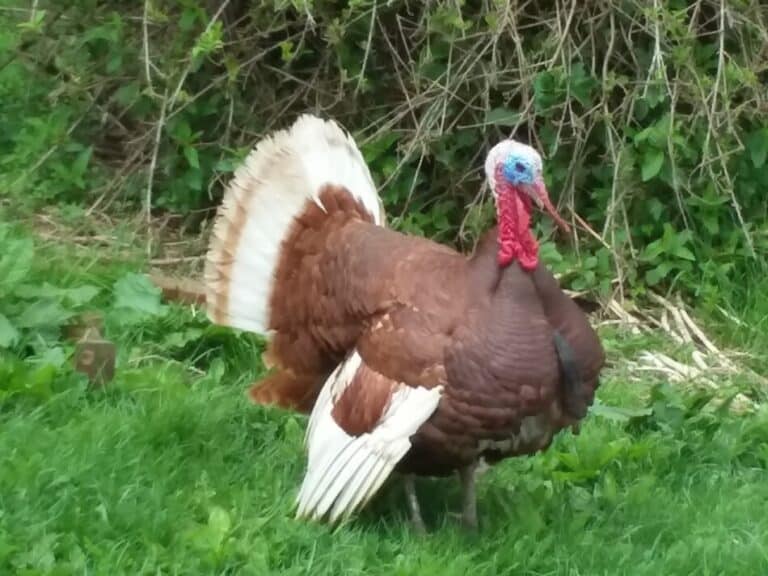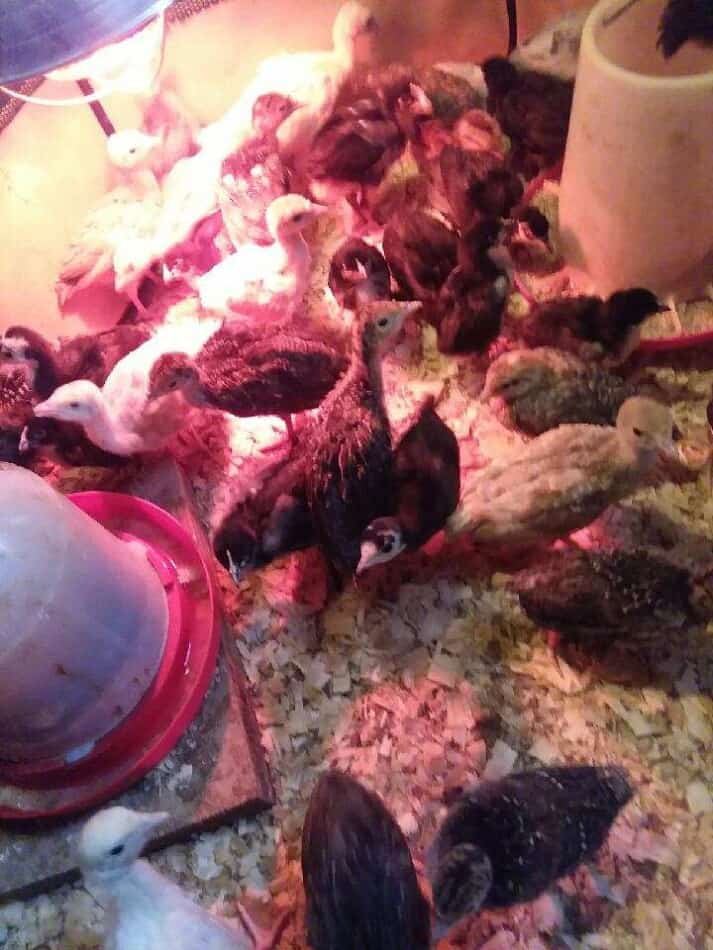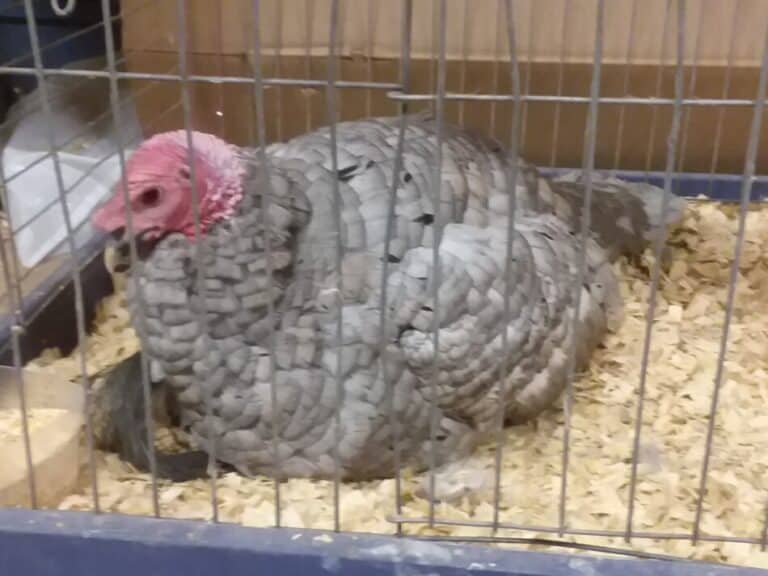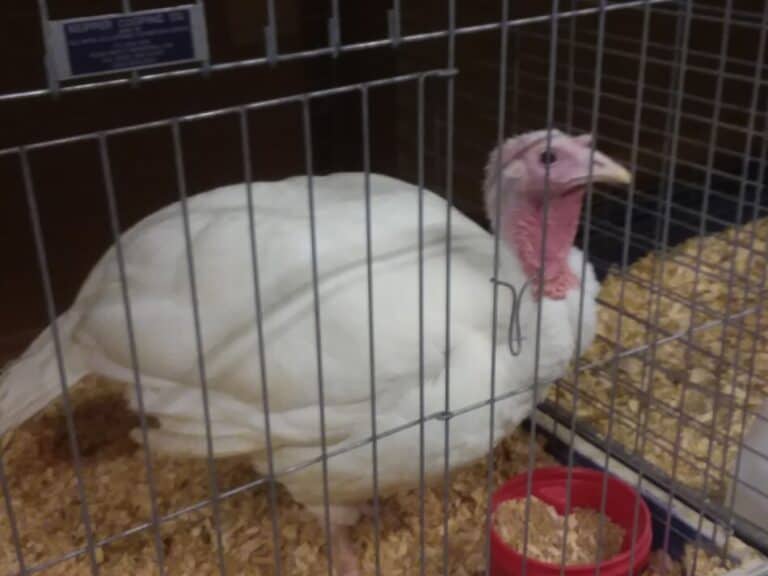What Is The Best Feed For Turkeys?
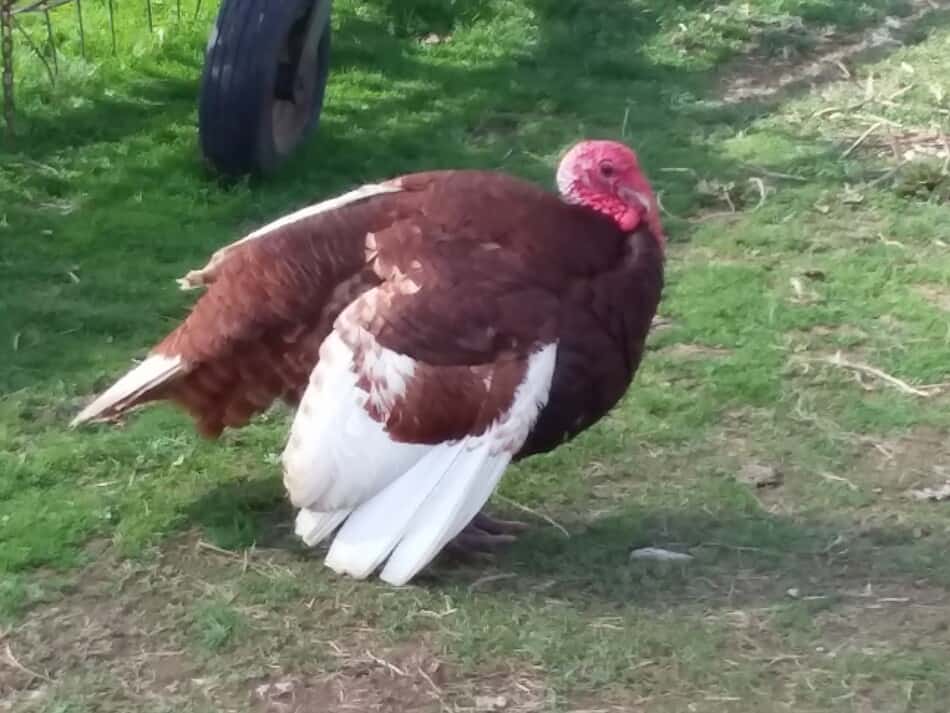
Turkeys need different feeds depending upon their age, whether they are young poults or adults, and the time of year, mainly are they on a maintenance ration or are they in breeding season.
What is the best feed for turkeys, based on their age, and when do turkeys need switched to a different feed?
The best feed for turkeys is a 28% unmedicated turkey starter for day old poults, which will be gradually transitioned to a 12% unmedicated maintenance ration for adult turkeys.
| Age Of Turkey Poults | Turkey Feed Needed (percent protein) | Alternative Feed Option (if turkey feed formulations are unavailable) |
| 0-4 weeks | 28% | Gamebird starter (30%) |
| 5-8 weeks | 26% | |
| 9-12 weeks | 22% | Broiler starter, also called Meatbird crumble |
| 13-16 weeks | 19% | Gamebird grower (20%) |
| 17-20 weeks | 16.5% | All flock pellet (17% formulation) |
| 21-24 weeks | 14% | |
| Maintenance | 12% | |
| Breeding | 14% |
The best feed for turkeys depends upon their age. The table above lists out the different feed protein percentages and the corresponding age of the poults.
Young poults have a very high nutritional need that must be fulfilled to grow and stay healthy. Maybe you’ve heard that poults are hard to raise? They’re not, unless you cheap out on feed, then it’s a mess!
Looking into your options for which breeds of turkeys to raise? Read 10 Breeds Of Turkeys For Raising Your Own Meat.
Day old turkey poults need a 28% feed
The key to raising healthy poults is to give them the correct feed! For your day old poults, use 28% feed or a gamebird starter which will be a 30% feed.
Poults need a much higher protein feed than most other young birds and the appropriate day old poult feeds are noticeably more expensive than what would be fine for chickens.
This is where the mess ups happen, when new turkey raisiers try to find a work around replacement for turkey starter. (Turkey starter is the 28% feed that you give day old poults, it’s made to be their first feed.)
The older the poults are the less exact you need to be with their feed if they are outside and supplementing their ration with grass and bugs. It still needs to be close, but a little bit off won’t be a huge deal.
Turkey poults need different feed than chickens
Sometimes it can be hard to source a higher protein feed for your poults, and it’s easy to think well what about using a broiler feed, instead? Short answer: Don’t do it. The only acceptable substitute for turkey starter is gamebird starter.
I can see why you think of broiler feed right off, it is a higher protein feed, as far as chickens go, but it’s not enough for your poults!
Use the turkey starter, if it’s available in your area. You can use gamebird starter, which is also a very high protein, non medicated feed. Any formulation for chickens, no matter the chicken, will not work.
And definitely not an “All Flock” type feed, it will be no where even close to what your poults need. Maybe it will be your best choice when they are adults, but not now.
We use a gamebird starter for turkey poults
In our area, we have to go to a feed mill that is 45 minutes away from here that has gamebird feed. We feed Hubbard Homestead Gamebird starter then grower to any poults we raise.
As the name “starter” suggests, it is the first feed your new poults need. It will be a bit higher in protein than the grower and come in smaller pieces, called a crumble, so it’s easier for the poults to eat.
If you don’t have a farm store that will carry turkey or gamebird starter normally, see if they can order it in. Our local farm store does not keep turkey starter in stock, but can have it in when ordered ahead of time.
As I mentioned, we use Hubbard feed for the turkeys, click here for Hubbard feeds dealer locator page to see if this is an option that will work for you.
While I would love to be an affiliate for Hubbard, I am currently (4/20/2021) not, they just have great feed that has worked well for us any time we have used it. (If this changes, it will be listed on the site.)
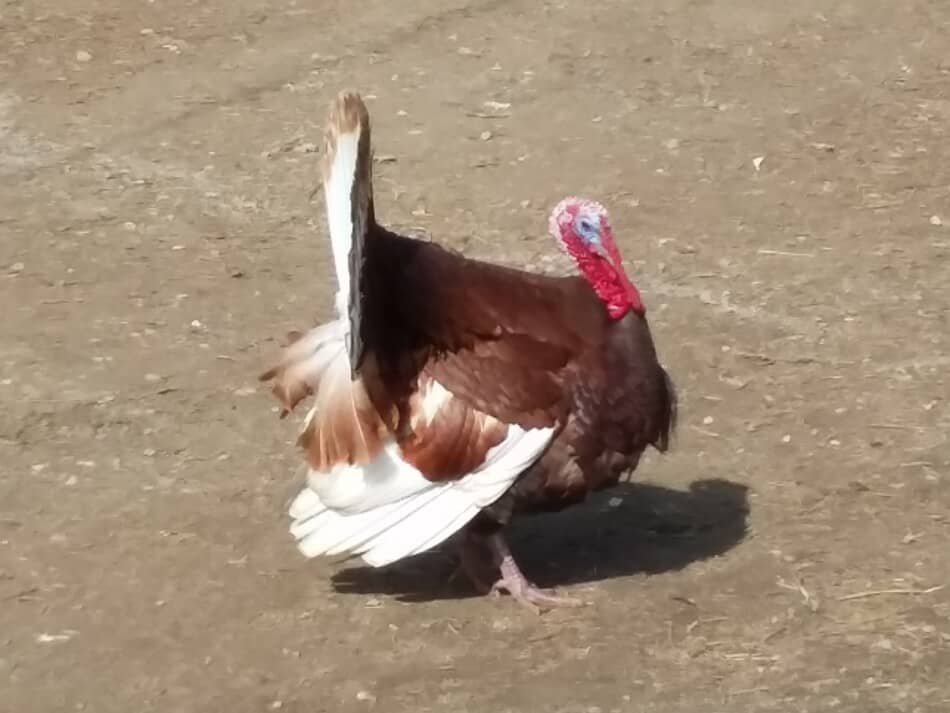
Protein % needed will change as turkey grows
You’ll notice in the table at the beginning of the article, the percent protein in the feed changes as the poults grow. This is normal for any feed ration.
The reason that you’ll want to keep track of the poults age and reduce the protein percentage of the feed is that higher protein feeds are expensive and lower protein feeds are less so.
You’ll still want to keep a very high quality feed available to your turkeys as they grow, especially if you are raising the broad breasted birds! The high protein is what keeps their legs strong, even when the poults are growing fast.
To save a bit of money per pound on your feed, drop down to a lower percent protein feed as your poults grow. You don’t have to drop down in protein, but it’s best if you can.
Sometimes you might need to get creative. For instance, if you have poults that are 9-12 weeks old, now you can use a non medicated 22% broiler feed if your local feed store does not have a step down turkey feed formulation.
If your local feed store’s broiler feed is a 20% (non medicated, of course!) feed then you’d need to wait until 13-16 weeks to use it.
Of course, any feed changes need to be made gradually by mixing in more and more of the new feed per day over the course of a week or so. Do your best, but just don’t switch feed all of a sudden, ease them into it.
Once your poults can go outside, read Space Needed To Raise Turkey Poults, keep feed available to them.
Poults will eat whatever snacks they want to outside and eat the turkey feed they need, as well. As long as your poults have feed to eat, they’ll balance their own diet, depending upon whatever they found in the yard.
Do not have your growing poults outside without feed. Your poults are bred to grow, this requires plentiful energy. Keep feed available free choice to your poults until they are adult or butchering size.
Adult turkeys need a 12% feed
Once your turkeys get to adult size, they are fine with a 12% feed as a maintenance ration. 12% non medicated poultry feed should be really easy to find at most any feed store.
Notice that 12% is a maintenance ration, not a breeding/laying ration.
Give your adult turkeys enough feed so that they have shiny feathers, but not so much that they get fat. The amount your birds need will depend on what ever else they can find to eat in addition to the feed you are providing.
Just watch the condition of your birds, if they look good, you’re doing it right! If your turkeys look a bit lackluster, up their feed amount and possibly increase the protein in the feed, especially if you notice they are molting.
Before breeding season, switch adult turkeys to a 14% feed
When you are approaching breeding season, up the protein that your turkey hens get to 14% to make sure she has all of the energy she needs to lay good eggs (we don’t want weird shapes or weak shells), and set.
She’ll be setting for almost a month! This is where the extra attention you paid to her by giving her the higher protein feed will pay off.
Make your switch to the breeding ration a month to 6 weeks before breeding season starts. You want to be on your game, here. Turkeys are seasonal breeders, with a short season, at that.
Mark the dates on your calendar so you’ll be ready.
I can’t give you dates for breeding season, this is very dependent upon your area. Ask around to see when other folks in your area start getting eggs or when their poults hatch and work backwards from there.
If you can find it, figure out when the wild turkeys (or other wild birds) in your area are hatching poults and use those dates to work from.
Our turkeys are free to roam, so can self supplement better feed
Our adult turkeys run around the barnyard and eat grass and bugs and occasionally eat some shelled corn. We don’t feed them anything special, since they can roam about and get what they need by grazing.
As is, they are happy and healthy, so as long as they stay that way, I don’t’ worry about their diet too much, since they are adults.
If our turkeys did not have access to grazing, I would be more concerned about their feed and shelled corn would not cut it! If your breeding turkeys are confined, they will need a breeding ration.
Have a plan for the poults, do not let them run with the hen!
As a side note, please have a plan for the poults. Turkey moms are great setters but the worst moms!
Have her in a roomy, secure pen or raise the poults yourself. I know that sounds mean, but she’ll lose them unbelievably fast. It’s truly shocking. Trust me, I am not being dramatic here, the same thing happens with guineas.
Every predator you can think of loves poults! A secure pen is a must.
If you decide to try to keep the hen with the poults, know that she will eat the same starter that they do, meaning she’ll pig out on the pricey feed!
Resources:
University of Missouri Extension Nutrient Requirements of Chickens and Turkeys, scroll down the page for the tables with turkey information
